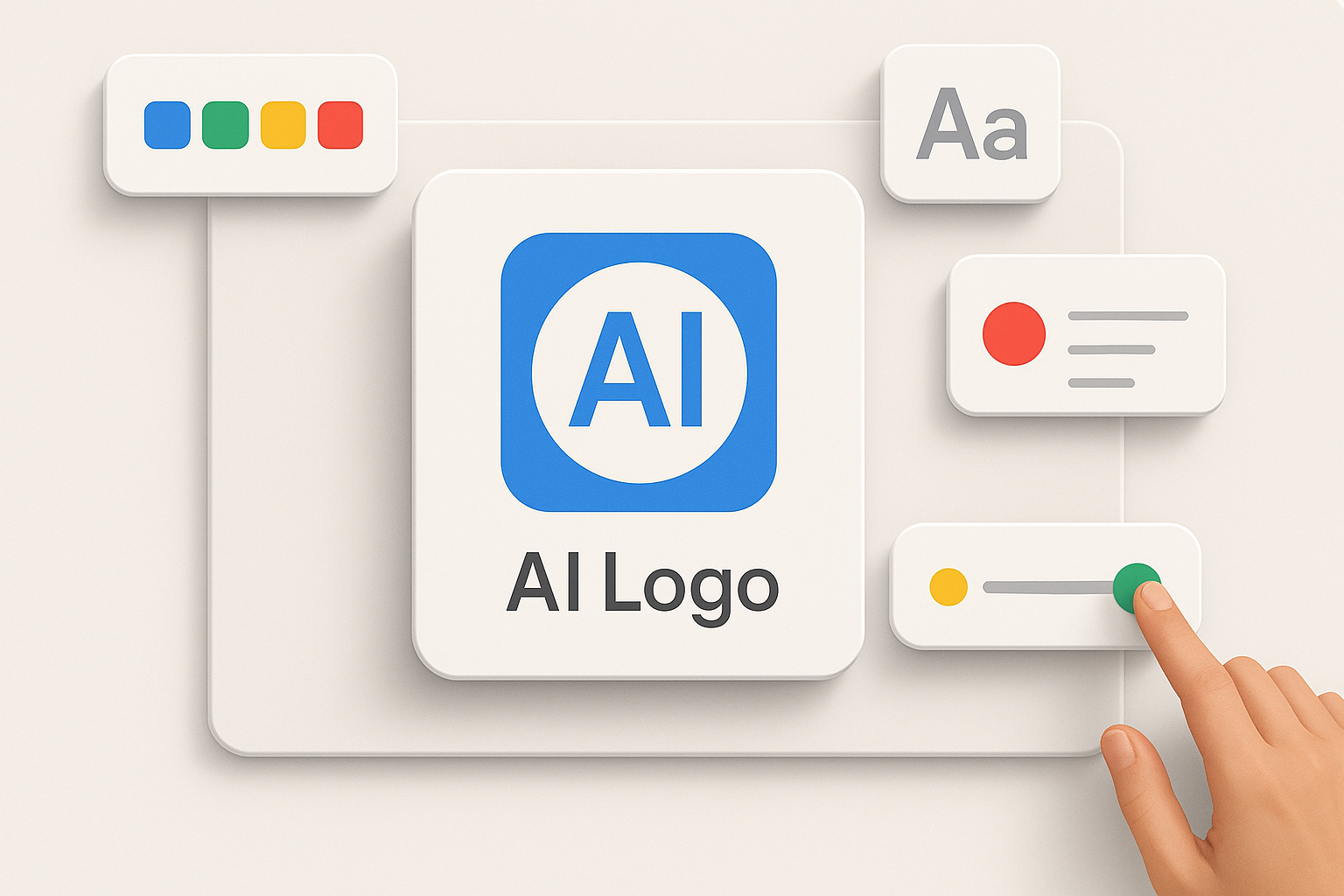Creating a logo today is easier than ever, thanks to the rise of artificial intelligence. But convenience often comes with hidden complications. One of the most pressing concerns for businesses and entrepreneurs is the legal ownership of AI-generated designs.

Your logo is more than a graphic—it represents your business, identity, and values. That’s why understanding the legal framework behind AI-generated logos is essential. Missteps here could mean facing trademark disputes, failed copyright registrations, or even rebranding.
In this article, you’ll learn:
- What the law currently says about AI-created intellectual property
- The difference between copyright and trademark protection for logos
- What risks you face using AI-generated designs commercially
- Actionable steps to protect your brand legally
1. Understand what makes a logo legally protectable
Legal protection starts with originality. Copyright and trademark laws only apply to logos that show a minimum level of creativity and distinctiveness.
For instance, a generic blue circle with the word "Tech" might not qualify for trademark protection. But a stylized blue arc with integrated typography—think Amazon’s arrow—likely would.
Make sure your AI-generated logo reflects some degree of human-guided design input. The more unique the composition, the stronger your legal position.
Remember that originality isn’t just artistic—it’s legal currency.
2. Know the copyright limitations of AI-created works
Here’s the catch: In many jurisdictions, copyright law only applies to works created by humans. That means logos entirely generated by AI, without human input, may not qualify for copyright protection.
A U.S. example: the Copyright Office has rejected registrations for works created by AI with no human involvement. So even if your design looks great, you may not own exclusive rights to it.
To improve your legal standing, consider editing or customizing the output. Adding color variations, layout adjustments, or custom typography strengthens your claim.
Don’t be afraid to put your stamp on it—your edit could make all the difference.
3. Focus on trademark strength and eligibility
Copyright issues aside, trademarks protect logos as brand identifiers. But again, the design must be distinctive enough to serve as a source indicator.
For example, Dropbox’s open box symbol or the Airbnb "Bélo" mark are both unique, recognizable, and legally trademarked.
When you create a logo with AI, be sure it avoids generic shapes or overused iconography. Use features like custom font choices and unique color palettes to set your design apart.
Pro Tip: Keep your visual identity consistent across all channels.
4. Check your AI tool’s terms and usage rights
Before relying on AI-generated logos, carefully read the platform’s licensing terms. Do you get full commercial rights? Can the same logo be generated for others?
Some tools offer limited usage or shared licenses—meaning your logo could be reused or sold elsewhere. Always opt for platforms that grant exclusive rights, or better yet, allow full customization.
Turbologo, for instance, lets you modify AI suggestions with personal inputs—offering more assurance when it comes to originality.
Here’s the trick: Read the fine print before you download.
5. Avoid stock and overused elements
One danger with AI tools is the repetition of visual motifs. If your logo features a generic lightning bolt, mountain outline, or handshake, you risk blending in—or worse, infringing on another brand’s look.
Use inspiration, but don’t copy. Combine AI ideas with your brand voice to create something fresh.
Examples of Creative Logo Approaches: Spotify, Dropbox, Airbnb
These brands use simple but conceptually rich imagery. That’s what makes them memorable—and protectable.
6. Register your trademark as early as possible
Once you finalize your AI-generated logo, consider trademark registration right away. It not only strengthens your legal rights but also provides public notice of ownership.
The process varies by country, but typically involves a review of uniqueness, classification, and intended use.
Don’t wait until you go viral. Protect your identity from the start.
7. Document your design process
Keep a record of your creative journey—from brand brief to AI inputs to final design edits. Screenshots, draft versions, and notes help prove authorship if disputes arise.
In legal terms, documentation can serve as evidence of human contribution and originality.
It may feel tedious now, but it’s peace of mind later.
8. When in doubt, consult a legal professional
If your logo is core to your business (and it usually is), it’s worth getting expert input. Intellectual property attorneys can help you understand your rights and prevent costly mistakes.
They can also advise you on international protection strategies and potential red flags in your design.
You don’t have to navigate it alone.
Final thoughts
AI has revolutionized how we create logos, but it hasn’t replaced the need for smart, legally informed branding. You must go beyond aesthetics and think about ownership, uniqueness, and protection.
With the right steps, you can enjoy the speed and creativity of AI—without sacrificing your brand’s legal safety.
Be bold. Be original. But above all—be protected.







